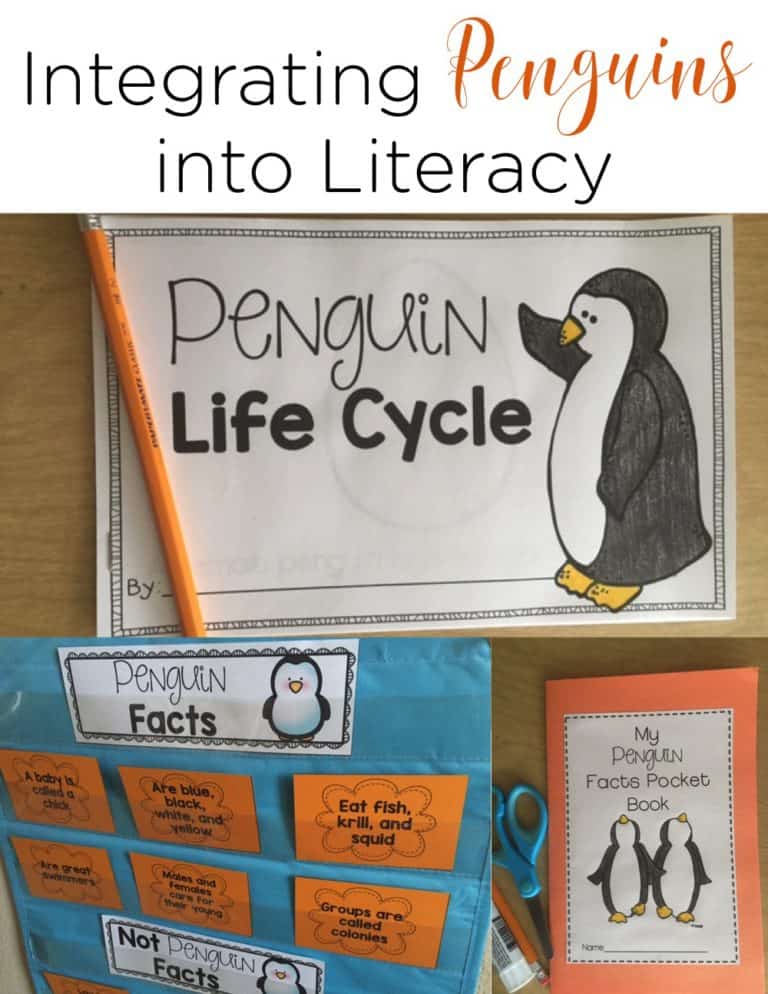

There are a ton of great life cycle activities online, Pinterest, and in your curriculum, but how do you decide which ones to do? Which activities will help teach and reach all of the students in your class?
I don’t know about you, but when I first started teaching, I was drawn to the super cute crafts. But then I realized that many of my students, especially my ESL students, weren’t necessarily getting a deep understanding of different animals’ life cycles.
When choosing life cycle activities, I decided I wanted a few things:
Keeping these things in mind, I wanted to share some ideas to help you make the most out of your life cycle activities. Maybe these ideas will be new to you, or maybe they will inspire you to tweak some of the ones you might have planned.
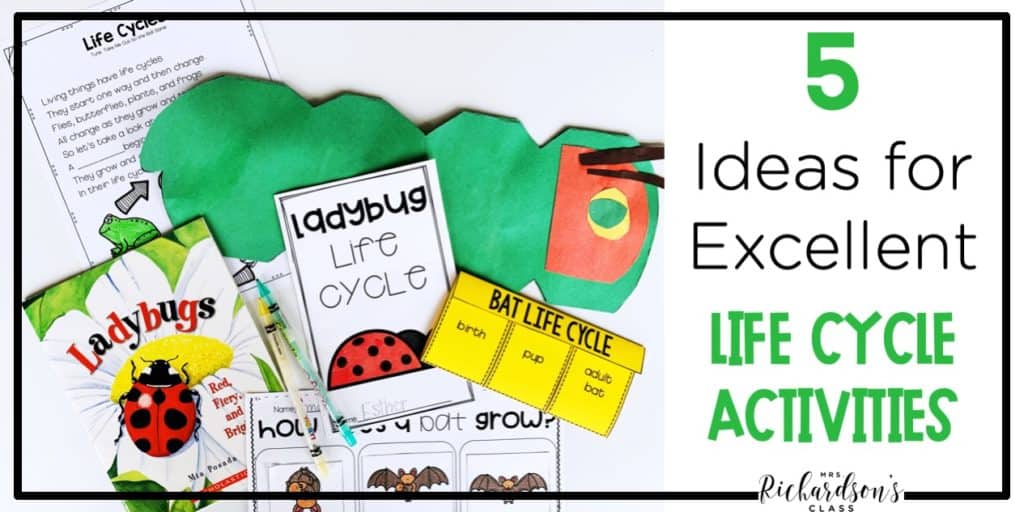
**Amazon affiliate links are used below at no extra cost to you.
If you’d like to make teaching life cycles easier than ever, you can check out the Life Cycle Bundle which includes eight units to teach the life cycles of a butterfly, bat, horse, frog, snake, fish, ladybug, and chicken.
One of the activities I always use to help introduce life cycles is read alouds. Using read alouds in science has many benefits. You can add a read aloud in your lesson plans no matter which life cycle activities you choose to do. By reading books before and during science units, you can:
I love integrating science into reading whenever I can! Remember to choose books that are on students’ listening level. Meaning, choose books students can comprehend when they listen, not just books on their reading level. Their listening level is higher than their independent reading level.
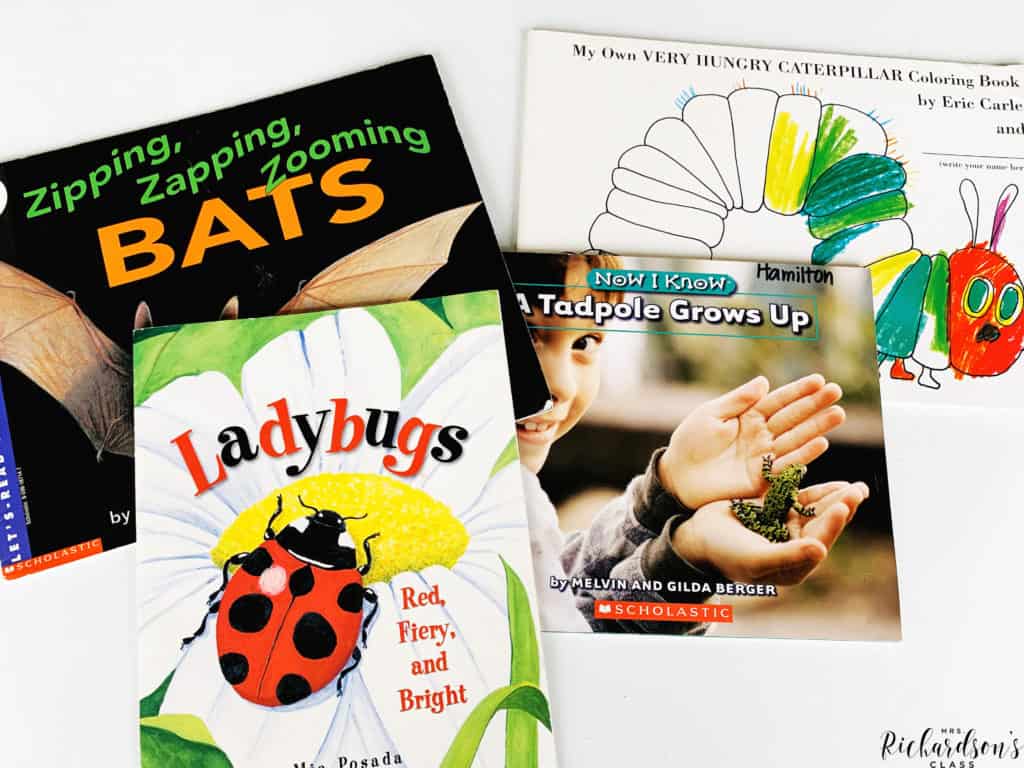
Here are a few great options for read alouds to help you teach and introduce life cycle activities:
I love, love, love interactive notebooks for science. There are so many things you can do with them! With my students, I loved watching their learning process unfold in their notebooks. We also used them to review or reteach concepts that needed a little more practice. Check out my favorite tips for interactive notebooks HERE.

When it comes to life cycles, there are many different foldables and books you can use to help teach. Each of my life cycle units includes components for interactive notebooks. When you pick up one of these units to use in your classroom, you’ll be totally set to squeeze in purposeful life cycle activities for interactive notebooks.
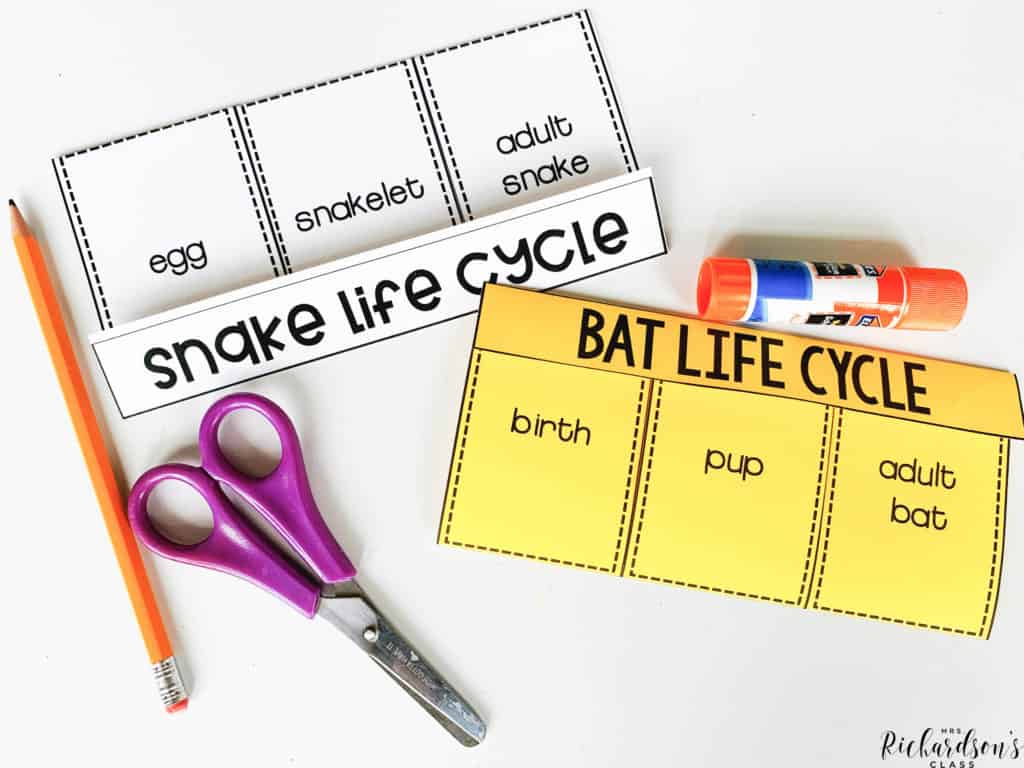
I also love to use graphic organizers with my students to really help them track their thinking and learning. Sometimes we put them in their interactive notebooks so they can refer back to them, and sometimes to fill them out as a group as we learn.
Do your students love watching videos and singing as much as mine? If so, you can enhance your life cycle activities by adding some fun and engaging ones in. Here are a few great options:
I would use songs and videos as an opening activity or to review our learning throughout the week. Songs are a great way to grab the attention of auditory-musical learners!
Some of my favorite life cycle activities for the primary classroom include the integration of science and literacy. Besides interactive notebooks, you can use writing activities, shared reading, and mini-books to help students gain a firm understanding of science and practice important reading and writing skills.
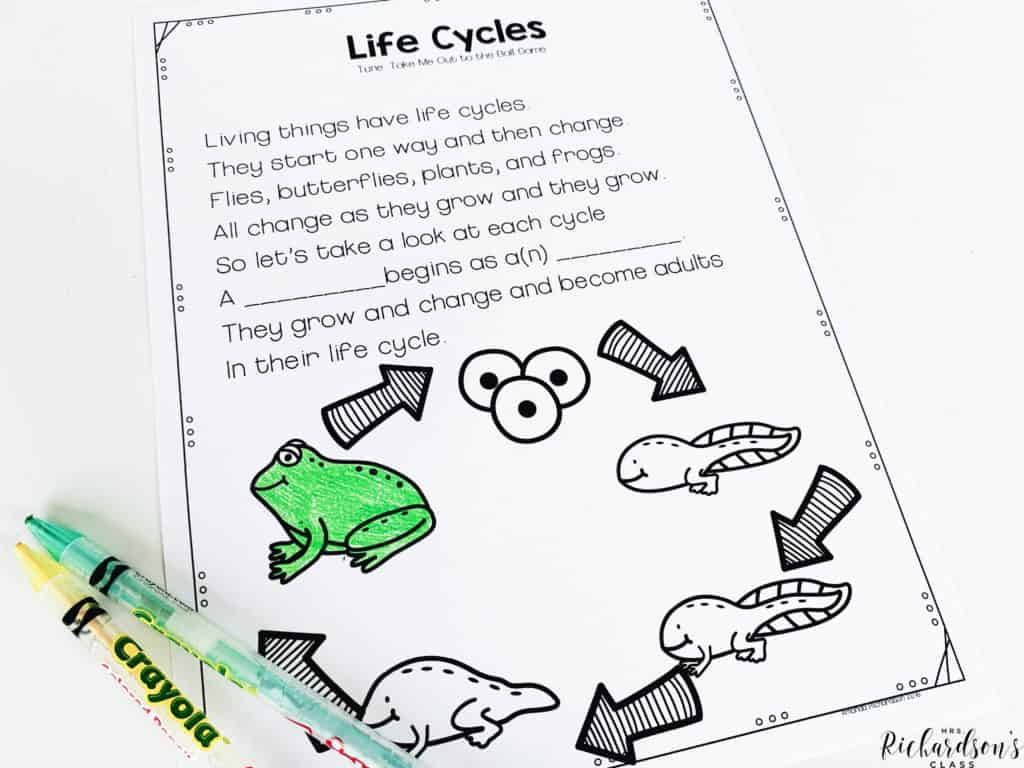
Choosing activities that integrate science and literacy will help you cover more ground in both literacy and science! For each of the life cycle units, I intentionally included graphic organizers and mini-books to help you be able to do just that.
You can use the graphic organizers as an introductory activity or for students to record their learning throughout the week. You can use the mini-book to review the life cycle facts. Then, students can put it in book boxes for independent reading time.
You can read more about KWL charts and grab some free charts HERE.
Assessing students can also serve as one of your life cycle activities. I tried to sneak assessments disguised as fun activities towards the end of the week. Sometimes I used a simple cut-and-paste and had students label the life cycle stages. These are included in each of the life cycle units to make assessments easy when you need it!
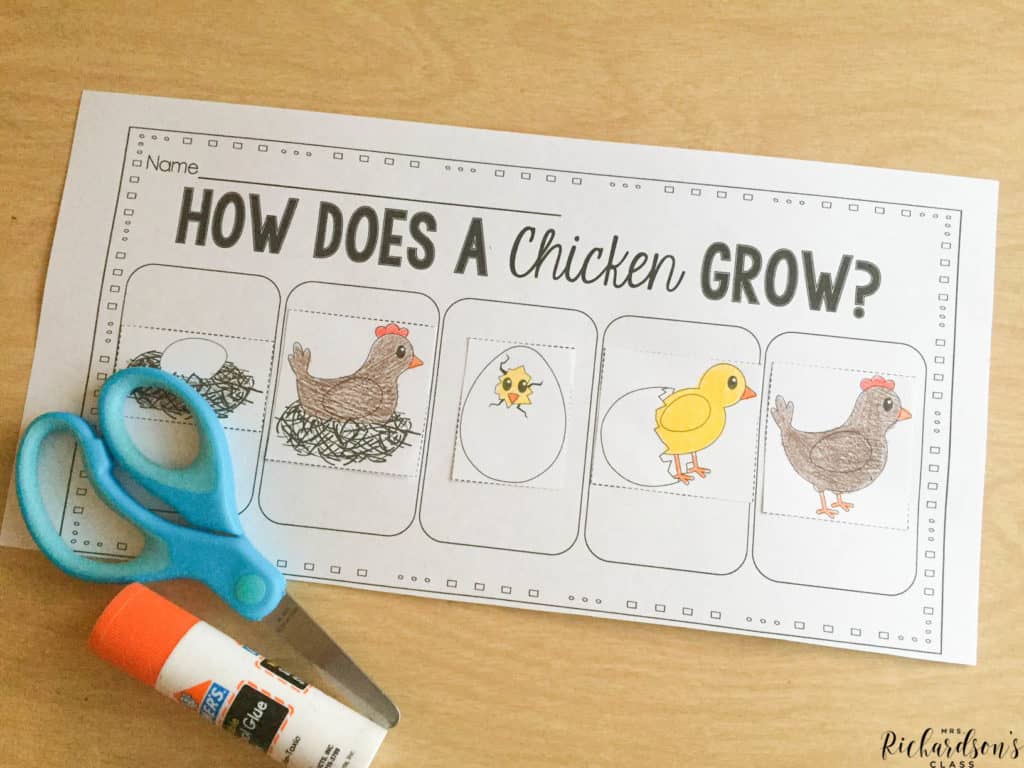
You can also use some life cycle pocket chart cards to assess students. You can have students put the cards in order and explain what’s happening during each stage. Each unit also has pocket chart cards for you to use to teach the life cycle, reenact it for practice or assessments, or put them in a workstation for sequencing.
Another option is to have students use their interactive notebooks to fill out a flip book about life cycles or just draw a life cycle and label it. Then, you can ask questions about each stage.
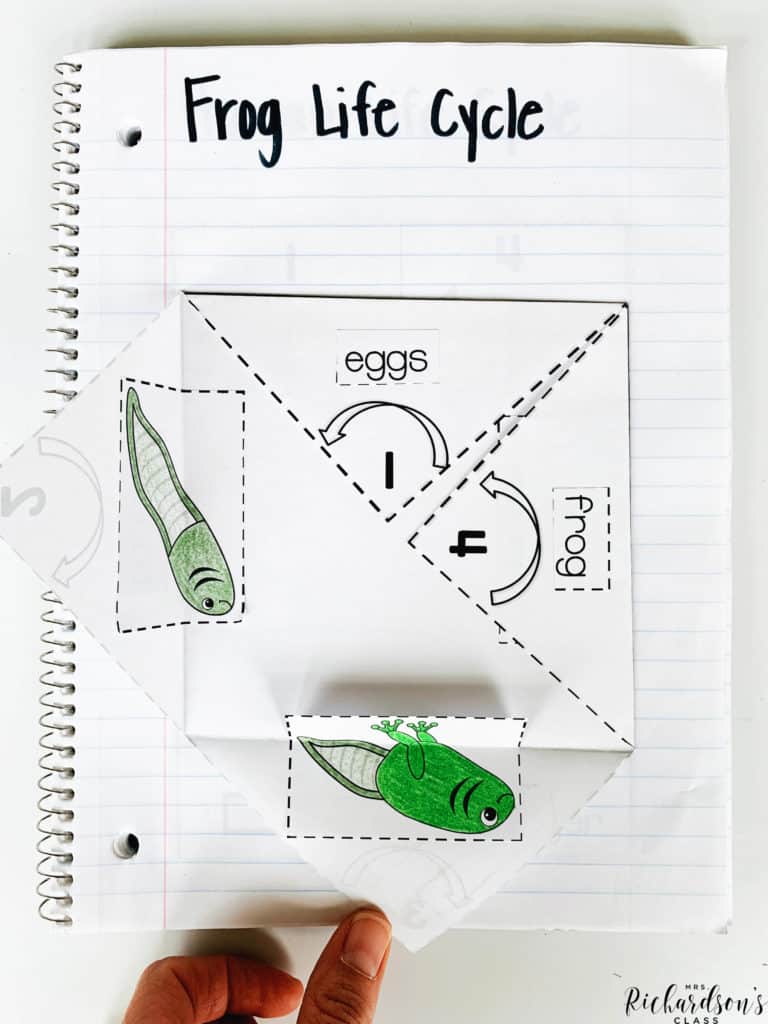
Finally, if I had time, I tried to integrate a craftivity – a purposeful craft activity that also integrated writing and science. One year, we recreated the butterfly life cycle with this craft! My students loved making it, and I loved how easy it was to assess them. Plus, I had an adorable display at the end of the week!
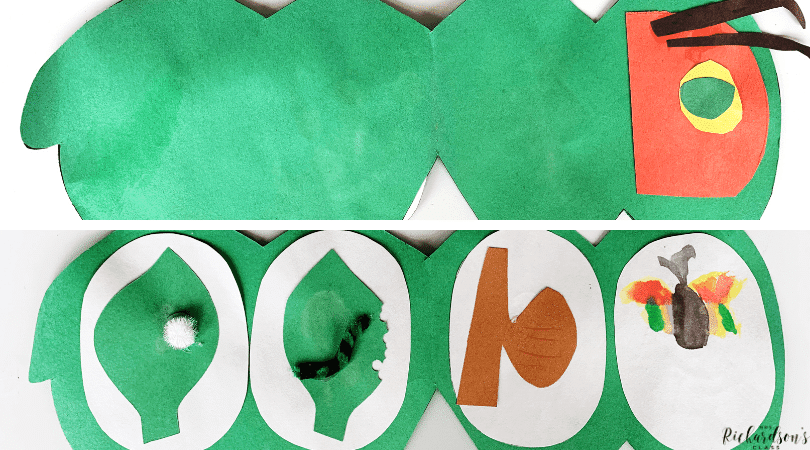
No matter how you decide to teach all about animal and insect life cycles, be sure to try to maximize your time and consider the different types of learners you have in your classroom. These five ideas to make life cycle activities a little more effective were my go-to for science. You’ll be able to easily work in fun and cute activities that are also engaging and purposeful when you try them!
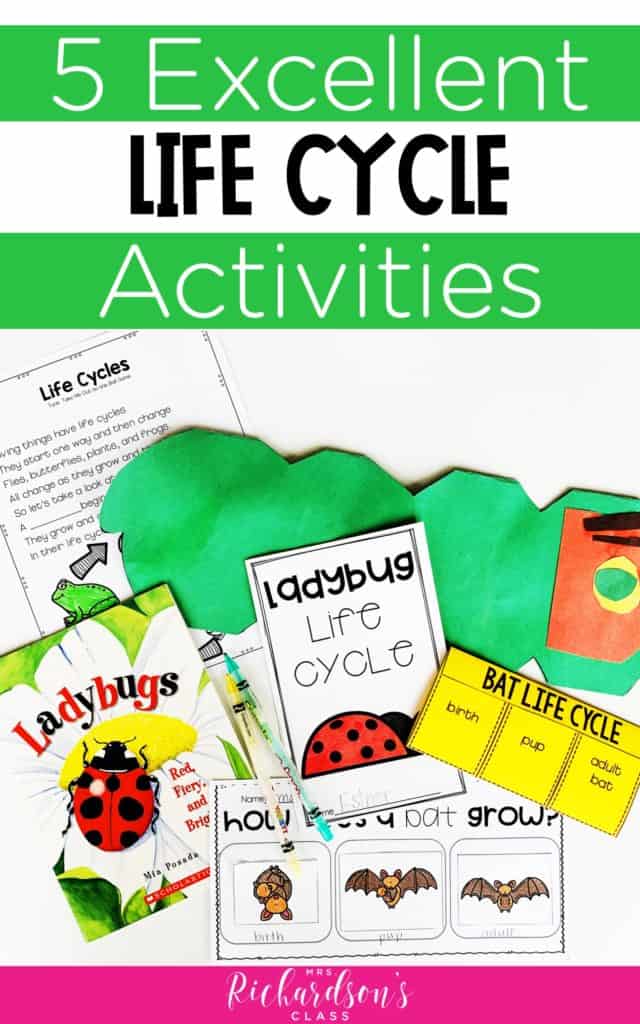
pin it
If you want to be set to teach life cycles, you can grab each of these units individually or save more than 30% by grabbing the bundle HERE.
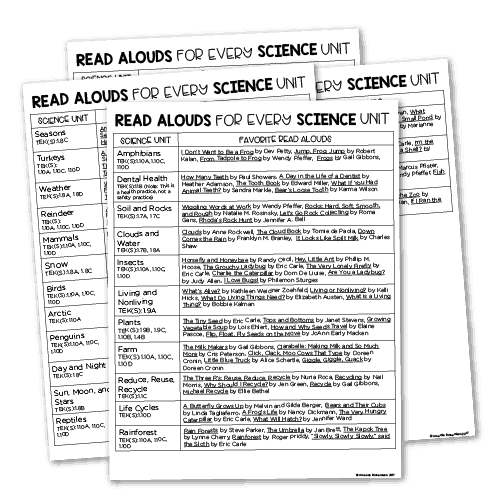

I’m a K-1 teacher who is passionate about making lessons your students love and that are easy to implement for teachers. Helping teachers like you navigate their way through their literacy block brings me great joy. I am a lifelong learner who loves staying on top of current literacy learning and practices. Here, you’ll find the tools you need to move your K-2 students forward!
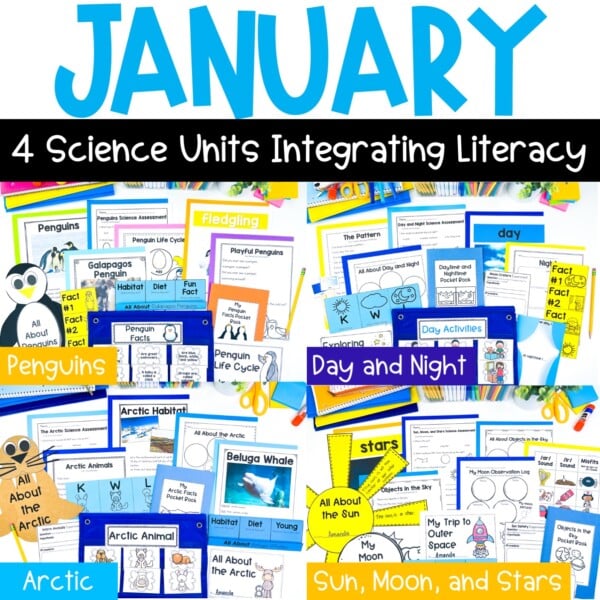


| Cookie | Duration | Description |
|---|---|---|
| cookielawinfo-checkbox-analytics | 11 months | This cookie is set by GDPR Cookie Consent plugin. The cookie is used to store the user consent for the cookies in the category "Analytics". |
| cookielawinfo-checkbox-functional | 11 months | The cookie is set by GDPR cookie consent to record the user consent for the cookies in the category "Functional". |
| cookielawinfo-checkbox-necessary | 11 months | This cookie is set by GDPR Cookie Consent plugin. The cookies is used to store the user consent for the cookies in the category "Necessary". |
| cookielawinfo-checkbox-others | 11 months | This cookie is set by GDPR Cookie Consent plugin. The cookie is used to store the user consent for the cookies in the category "Other. |
| cookielawinfo-checkbox-performance | 11 months | This cookie is set by GDPR Cookie Consent plugin. The cookie is used to store the user consent for the cookies in the category "Performance". |
| viewed_cookie_policy | 11 months | The cookie is set by the GDPR Cookie Consent plugin and is used to store whether or not user has consented to the use of cookies. It does not store any personal data. |
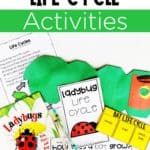
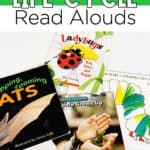
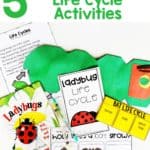
3 Responses
I would like the read aloud list. I accidentally typed my email address incorrectly.
Sent you an email! 🙂
I would like the read aloud list.